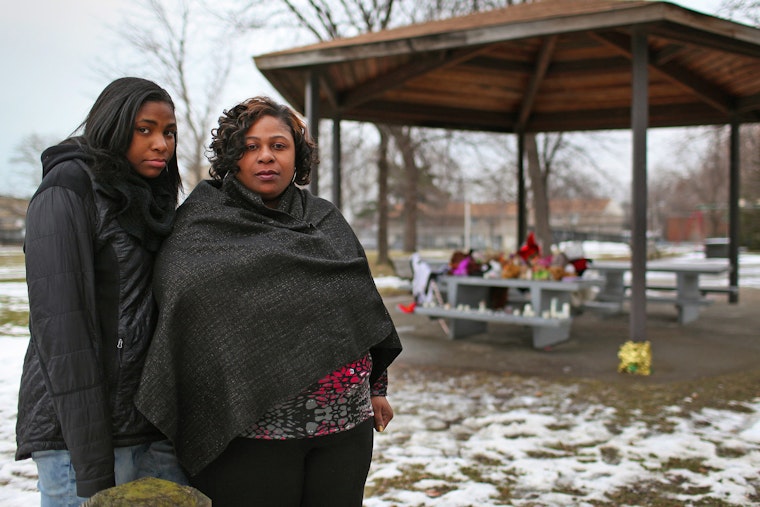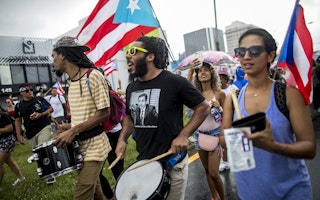A Chance to Rewrite America’s Racial Narrative
By Allison Brown

On Mother’s Day, I watch Samaria Rice beg for some closure five months after her son, Tamir, was shot to death by police officers within moments of encountering him in a Cleveland park. I think of Gloria Darden and the shock she must have experienced at discovering that her son, Freddie Gray, was killed so senselessly and so violently by police. I am awed by Judy Scott’s willingness and resolve to forgive the officer who shot her son, Walter, five times in the back as he fled a police confrontation, fearing for his life. That their sons have become household names, symbols for a movement, must be little consolation for the gaping holes that have been left in their lives.
In each of these instances, mothers lost their children to police officers sworn to protect the communities where they lived. These mothers, these children, and these communities are victims of something else, too—something that has plagued this country since its origins: a broken and corrupted racial narrative.
Watching the story of communities of color and the police unfold via cell phone video and social media these last months, I am reminded of a haunting passage in Devil in the Grove, Gilbert King’s Pulitzer Prize–winning history of Thurgood Marshall’s work in Florida as a crusading civil rights attorney. In the book, King recounts Alex Akerman’s defense of a black man on trial for the rape of a white woman, one of four black men falsely accused of the crime.
In his closing argument, Akerman, a white attorney recruited to the case by Marshall and the NAACP Legal Defense Fund, tries to win over the all-white jury of 12 Florida men. Akerman says:
Now I think most of you have had the experience of identifying Negroes. I know it is true with me, and I believe it is true with just about every one of you gentlemen, that the first time you see a Negro, you see nothing but a Negro, and if you see him again the next day, you probably would not recognize him as being anything but a Negro, and after he has worked for you say two or three or four or five or six days, then you finally begin to recognize him, and distinguish him as Jim or Joe or Jack or George. But as a matter of fact, if you have never seen a Negro but one time and it was in the dark, on a dark night, such as this alleged case was, then I submit to you gentlemen that you would not be able to recognize him again, so positively as Norma Padgett [the accuser] did.
That’s his defense: they all look alike, so how could the supposed victim have accurately identified her alleged attackers?
The dynamic described in Devil in the Grove may involve a piece of civil rights history. But it is still all too present in American life today. Too many police departments, educators, journalists, health care providers, and others in too many cities across the country default to a criminal caricature of blackness when they look at young men—and women—of color. And that fact has a lot to do with the series of stories about young people who are killed or otherwise die in police custody that has brought the nation to a crisis point today.
Amid the crisis, we must seize on an opportunity—an opportunity to change the stereotypes, the storyline, the racial narrative. To recognize that young black people, like anyone else, don’t fit one mold, but rather contain multitudes. Seizing this opportunity is what we seek to do at the Open Society Foundations.
We support research like the work done by the Perception Institute, demonstrating that white people do mental gymnastics to avoid seeing color, to hold themselves out as color blind. And we support work done by Race Forward: The Center for Racial Justice Innovation, which uses research, media, and practice to change racial understanding in this country. We also support Young Doctors DC, a living advertisement for the narrative we seek to promote, which trains young men in under-resourced and racially and socioeconomically isolated neighborhoods to be health care providers.
This work helps illuminate what Dr. Gail Christopher, vice president for policy and senior advisor for the W.K. Kellogg Foundation, calls “racial hierarchy”—the belief that whites preside over every other racial group in this country, and that racial groups’ position in that hierarchy determines their societal worth. This racial hierarchy is deeply embedded in American culture, dating back to slavery and before, and lingering on in ways seen and unseen, creating a reality of structural racism.
Tearing down structural racism, and the faulty perceptions on which it is built, is the mission of our racial narrative efforts. The work is hard, and it will take time. But if we succeed, we can overcome the tragedies in Ferguson, Staten Island, Cleveland, and Baltimore, and gain a better understanding as a nation of the value inherent in all of us, particularly those who operate at the margins and yet still manage to produce scholarly and cultural contributions that have formed the fabric of this great nation. That is a story worth telling.
Until October 2015, Allison Brown was a program officer for racial justice with the Equality Fund of the Open Society Foundations’ U.S. Programs.


